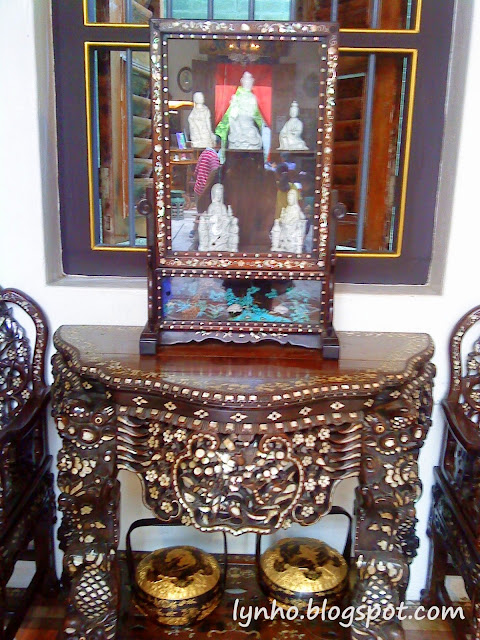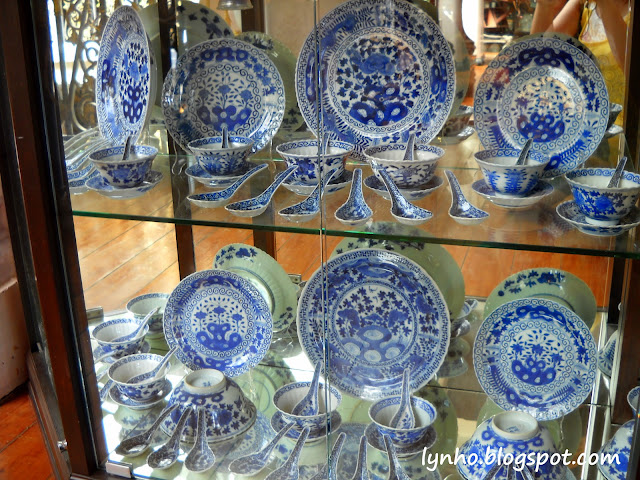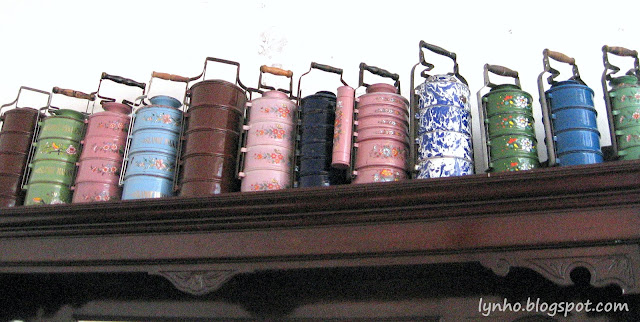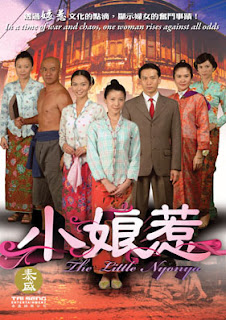I have always been fascinated about Penang, especially more
after having read the endless articles in the newspapers boasting about its
rich heritage & culture.
As most know Georgetown has been declared as a UNESCO World
Cultural Heritage City quite some time back, but I never gave it much thought
until I discovered that my paternal great-grandmother was actually a Penang
Peranakan Nyonya. Guess that stemmed my interest in the heritage of Penang. To
know more about the heritage of my forefathers, I went to visit the Pinang
Peranakan Museum together with my family to discover more about the heritage of
the Baba & Nyonya that I have not known anything about.
Visiting the Pinang Peranakan Museum gave us an insight on the
cultures of the Penang Babas & Nyonyas.
Their guided tours will open up your knowledge on the lifestyles of the
peranakan community in Penang. You may at first think that RM10 entrance fees is
rather expensive but after completing your tour of the Museum, you will feel
that the RM10 is really worth it as you will leave with more knowledge &
understanding of the peranakan culture...and lots of photos too (^-^)
Arriving at the gates of the museum, we were awed by the
beauty of the craftsmanship of the main doorway and balcony.
PINANG PERANAKAN MUSEUM ~ The iron gates
View as entering the main gates
The entrance to the museum ~ the rustic balcony with pale green
facade will seem all too familiar if you have watched the Singapore drama “The
Little Nyonya”
The main courtyard greets you once entering the mansion
The main courtyard also serves as an air-well with large
concrete floor as you enter the mansion.
Once entering, on the left is a beautifully wooden crafted
doorway painted with gold designs.
Formerly the main entrance to the mansion (which is now closed) opens up
into this room, with a large reception room for guests where many business discussions
were held. Whilst the smaller room beside is where the Nyonyas gather &
play ‘cherki’ (a traditional card game) while their husbands hold their
discussions next door.
The doorway with its intricately crafted wooden doors
View from the top floor of the mansion
The classical staircase leading to the upper floor of the
mansion
The intricate designs on the staircase
On the first floor, you can see
beautiful iron work on four sides of the inner balcony.
Antique vases & stool decorate the main courtyard
Antique furnitures,chairs & windows adorn the main courtyard
Behind these beautiful windows is a dining room used for
guests
Side dining chamber with western cutlery & tableware used
for entertaining English guests
Main dining room used for guests~ ‘tok panjang’ literally
translated as ‘long table’
Going up the lovely wooden staircase to the top floor, more
antiques are displayed. Exhibits ranging from nyonya brooches (kerosang),
hairpins (cucuk sanggul), traditional covered jars (kamcheng), metal belts,
gold bracelets, table wares are displayed.
Angklets & Belt
Gold jewellery
Brooches, hairpins & other
accessories
Traditional covered jars (Kamcheng)
Traditional tableware
Some of the chambers feature the
traditional peranakan bridal rooms, bridal headwear & various vanity tables
Bridal bed
Bridal Crown worn by the Nyonya
Traditional peranakan headgear
Vanity tables in the bridal chamber
Hand sewn embroidery tablecloth
A typical nyonya bedroom
Clothes cupboard & vanity table
Sewing room where the nyonyas make their
long shirt (baju panjang), embroideries & beaded shoes (kasut manik)
A beautifully embroideried ‘baju
panjang’
The hallways of the top floors are
complete with antique furnishings
Chair where they laze to smoke opium
Upstairs living room
Peranakan lacquerware carriers
Imported antique glassware
An old antique radio
In another section of the mansion
stands the Ancestral Hall
In the back wing of the mansion, there is a large dining room especially
for VIP guest. This room looks more stately and out of the ordinary from the
rest of the dining rooms in the mansion.
Walking into this dining room feels like stepping into a totally
different era ~ more to the English era.
The doorway to the VIP dining room, used for entertaining
foreign guests
Tables with lovely glassware
At the far end of the dining chamber a glass door opens out to a
small courtyard with a pond
The beautiful wall design
Doorway from the dining chamber to the kitchen area
The kitchen area also has another open air-well
Air-well in the kitchen area
Tableware used by the servants
Tiffin Carriers
From top left: Mortar & pestles used for pounding spices,
Food covers, kettle, pots & antique urinal pots.Top : Peranakaan kandar baskets; Bottom : Food cover & food grinder
Flasks, cooking utensils & Chinese tea cups
Spices used in peranakan cooking
A typical peranakan cooking area
Our tour of the Pinang Peranakan Museum ended with a photo
with our tour guide. You will be surprised as we are, that he is a foreigner.
Honestly, our first thought when we met him was “ Huh? A foreigner? What does
he know about the peranakan heritage??” But
his knowledge of the history & artefacts of the museum is far beyond any
local here. ~ and he speaks fluent English too d(^-^)b
The cast of 'The Little Nyonya'






























































No comments:
Post a Comment